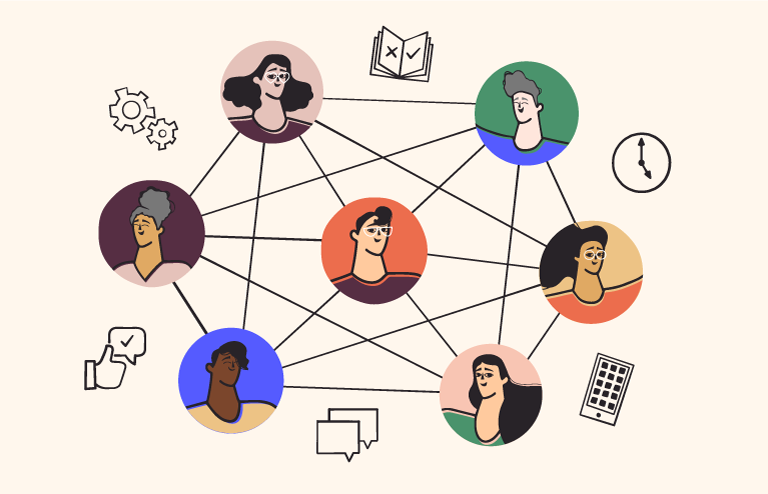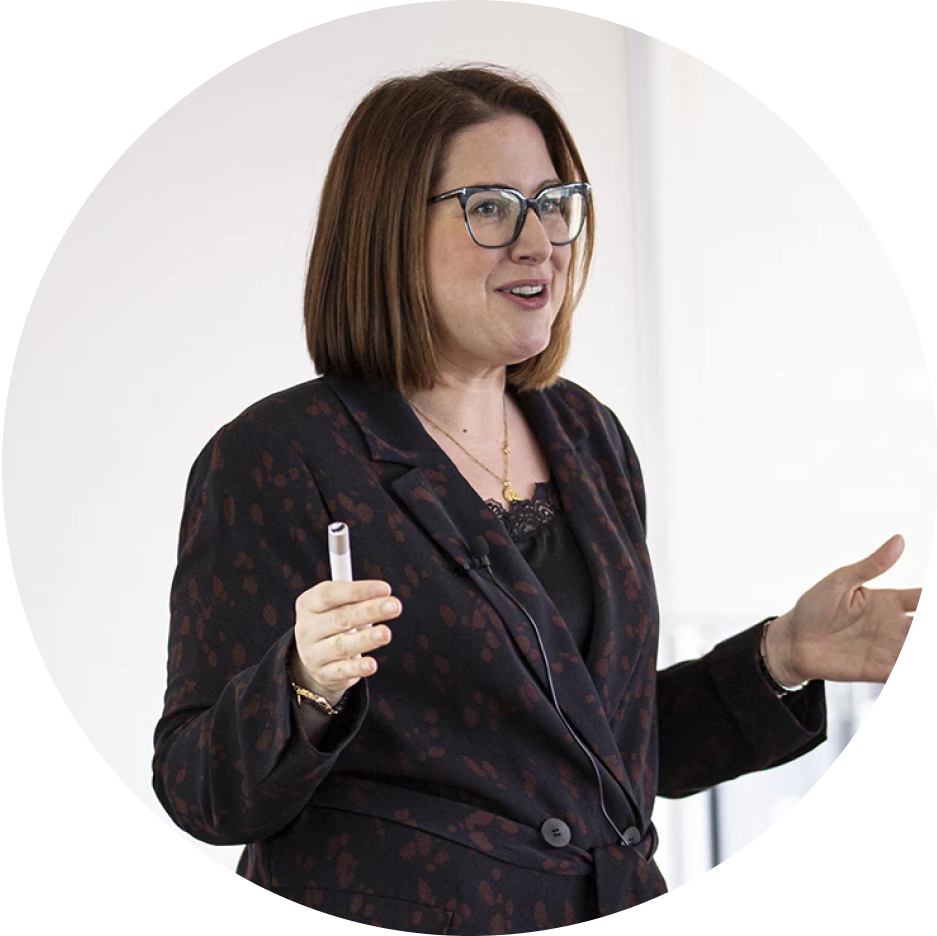10 shifts transforming organisations in 2023 | McKinsey

A new report from McKinsey has identified the ten most significant shifts that organisations are facing today. The research acknowledges that equipping organisations to deal with all of them will be costly and complex but we don’t necessarily agree.
We believe there is a contemporary leadership development solution that speaks directly to the most significant shifts for organisations in 2023.
The report highlights that an organisation is 2.4x more likely to achieve performance targets if it has a focus on developing leaders and that transformations are more than 5x more likely to succeed if leaders model the desired behavioural changes.
1. Increasing speed, strengthening resilience |
|
| What the report says: | |
| Volatility is a feature, not a bug, in today’s organisations, yet 50% of respondents said their organisation is unprepared to react to future shocks. Those able to bounce forward - and quickly - out of serial crises may gain significant advantages over others. To be able to do so requires organising for speed of response, giving power to your people, and developing a culture of continuous learning. | |
| What TCLC says: | |
|
It is essential to provide a continuous learning journey for leaders to develop new skills, iteratively and “in-the-flow” of work. This is what leads to a culture of continuous learning. |
2. ‘True hybrid’: The new balance of in-person and remote work |
|
| What the report says: | |
| Since the pandemic, about 90% of organisations have embraced a range of hybrid work models that allow employees to work remotely from off-site locations (including home) for some or much of the time. It is important that organisations provide structure and support around the activities best done in person or remotely. | |
| What TCLC says: | |
| Different people require different solutions to work at their best. And different environments can support different kinds of work. The key is to be able to tailor the solution to provide the best outcome for both wellbeing and productivity. Taking the time to reflect on what enables each person to work at their best will lead to carefully considered solutions that lead to optimal work rather than white-washed rules that don’t work for everyone. |
3. New rules of attraction, retention, and attrition |
|
| What the report says: | |
| People are revising their attitudes both toward work and at work. Employees who have quit say it isn’t just money, work–life balance, professional development, or purpose that will bring them back to work in 2023: it's a combination of all those things. In Europe, 35% of people leaving jobs cite unsustainable performance expectations. Organisations can respond by tailoring employee value propositions to individualised preferences in ways that can help close the gap between what today’s workers want and what companies need. | |
| What TCLC says: | |
| The workforce is waking up to the fact that it is possible for organisations to craft work and solutions tailored to the individual. There is increasing reticence to sign up to punishing work schedules and toxic cultures just because that’s the way things have always been. Coaching leaders in how to craft work for their team to optimise their individual and organisational potential drives down attrition rates and maximises both performance and wellbeing. |
4. Closing the capability chasm |
|
| What the report says: | |
| Companies across sectors often announce technological or digital elements in their strategies without necessarily having the right capabilities in place to integrate them. To achieve a competitive advantage, organisations need to build institutional capabilities - that is, an integrated set of people, processes, and technology that creates value by enabling an organisation to do something consistently better than its competitors do. That means plugging gaps in their core activities, which are often the result of insufficient resources or inconsistent commitment. | |
| What TCLC says: | |
| The days of off-site training workshops are on the decline. The learning transfer problem (of being able to apply learning from outside the environment in which it is to be applied) has shown that this costly exercise may not be worth it. Organisations need to focus on peer-to-peer, onsite, scalable and digital learning solutions to provide economical and effective training to its workforce to bridge the capability chasm. |
5. Leadership that is self-aware and inspiring |
|
| What the report says: | |
| Leaders these days are necessarily focused on short-term responses to crises, but they also need to think longer term and cultivate fit-for-purpose behaviours. They need to be able to lead themselves, they need to be able to lead a team of peers in the C-suite, and they need to have the leadership skills and mindset required to lead at scale, coordinating and inspiring networks of teams. That requires leaders to build a keen awareness both of themselves and of the operating environment around them. | |
| What TCLC says: | |
| Self-awareness is one of the most under-rated qualities of a leader. Knowing what drives and controls human behaviour is the key to affecting any lasting organisational change. But there is often very little time or encouragement for introspection and reflection in the workplace. For leaders to coach their team through any development they must first know how and demonstrate they are able to do the same for themselves. Building time into the working day to increase self-awareness is essential for any leadership development. |
6. Walking the talent tightrope |
|
| What the report says: | |
| Business leaders have long had to balance budgets while retaining key people. In today’s uncertain economic climate, organisations need to focus more on finding ways to match top talent to the highest-value roles. The idea isn’t new, but it’s the right one in this era of hybrid work models, increased employee mobility, and skill shortages. The research shows that 20-30% of critical roles aren’t filled by the most appropriate people. | |
| What TCLC says: | |
| Many leaders end up in managerial positions because they’re good at their job, not because they’re necessarily good at managing people. Organisations are hampered by outdated promotional models that reward high performance with a team of individuals to manage. Such structures can have a devastating effect on the productivity, efficiency and morale of those involved. Cultivating exceptional leaders who are also highly talented at their jobs is the most efficient way of ensuring your top talent is in the right role. |
7. Making meaningful progress on diversity, equity, and inclusion |
|
| What the report says: | |
| Many DEI initiatives are not translating into meaningful progress. Often missing a clear link between the DEI strategy and that of the business. One path forward is for leaders to be more systematic early on, considering the objectives and desired level of impact from their programs. To realise DEI aspirations, leaders will need to identify opportunities for making progress within their organisations, as well as for improving their external communities and society. | |
| What TCLC says: | |
| We believe a successful DEI will not be achieved by telling people that exclusive and unfair behaviour is wrong and that they need to do better. The only way to eradicate toxic and systemic bias lies in self-awareness. This means cultivating a safe environment to ask people to reflect on their inherent beliefs and acknowledge the impact of holding them. Spending time examining the source of their beliefs and learning how to update them to more helpful beliefs is an essential practice. Knowing how to do this takes guidance and an understanding of the human mind. |
8. Mental health: Investing in a portfolio of interventions |
|
| What the report says: | |
| Nine of ten organisations around the world offer some form of well-being program. But global health and well-being scores remain poor, despite well-intended interventions. Research highlights the link between reports of poor mental health and wellbeing and organisational issues, including attrition, absenteeism, lower engagement, and decreased productivity. In 2023, organisations need to refocus their efforts on addressing the root causes of mental-health and wellbeing challenges in a systematic way; one-off and incremental fixes won’t be enough. | |
| What TCLC says: | |
| Huge levels of investment has been put into the triage and identification of mental-health issues in the workplace. Employers are beginning to recognise the impossibility of leaving non-work related anxieties “at home” but also that there are some very real threats to humanity in the workplace too. Psychological safety and inclusivity are essential for people to do their best work. But very often the investment into mental health has been into triage (mental-health first-aiders) and one-off interventions which does nothing to target the source of the problem up-stream that might be leading to the decline in mental health. Knowing what humans need to feel and work at their best is fundamental to an effective mental-health strategy and it means understanding some important truths about what people need and want as humans and as employees. |
9. Efficiency reloaded |
|
| What the report says: | |
| In today’s uncertain business climate, companies are refocusing attention on efficiency measures—more than one-third of respondents in our survey list efficiency as a top three organisational priority. Boosting efficiency is about more than managing immediate crises or getting the same work done with fewer resources. Deploying resources more effectively to where they matter the most promises substantial benefits, including improved organisational health, higher shareholder returns, and better and faster decisions. Being efficient often means placing more trust in your organisation and empowering employees. | |
| What TCLC says: | |
| Organisational health is more than the balance sheet. It’s about knowing what resource you have and knowing how best to use it. That means knowing your team well enough to know what they are capable of achieving and what might be getting in the way of them reaching that potential. That can only happen in environments that are built on trust, where individuals are empowered to make decisions knowing that their job and reputation are safe to risk possible and swift failure in the pursuit of greater innovation and success. To achieve this, organisations have to consciously cultivate cohesive and inclusive environments. This is not inherent behaviour for many and requires a constant encouragement for people to be and stay invested in the vision of the organisation. |
10. Making way for applied AI |
|
| What the report says: | |
| AI is more than just a potential opportunity to boost a company’s operations; it can also be used to build better organisations. Companies are already using AI to create sustainable talent pipelines, drastically improve ways of working, and make faster, data-driven structural changes. | |
| What TCLC says: | |
| Embracing scalable, digital solutions to solving problems is going to be mandatory for all organisations in an increasingly hybrid world. Developing new tools that speak to the demands of busy professionals and serve the workforce will be what leads to the efficacy and efficiencies the world needs. |
The contemporary solution
TCLC offers a three-stage solution that addresses all of the issues outlined above.
1. Our unique, scientifically validated Psychometric looks at the pillars of consciousness required for leaders to operate optimally in the workplace; it identifies to what extent they are awake, purposeful, resilient, growing and together. It is the only psychometric on the market that also measures wellbeing and burnout.
2. Our team of highly experienced Conscious Coaches offer 1-2-1 feedback sessions to uncover deeper insights from the psychometric reports. It allows participants a valuable opportunity to stop and reflect on how they are operating in auto-pilot and what they could do differently to breakthrough areas that aren’t working for them.
3. Our app, Consciously, provides a digital learning platform that offers continuous leadership development around the five pillars of Conscious Leadership. Packed full of evidence-based content that speaks directly to the most pressing issues leaders are facing. It provides leaders with solutions on demand, time for reflection and experimentation and equips participants with the tools they need to effect long-lasting change in themselves, their team and their organisations.
If you would like to know more about how you can equip your organisation to address all of these areas through our affordable and effective solution please do get in touch.
 Natasha Wallace
Natasha Wallace

